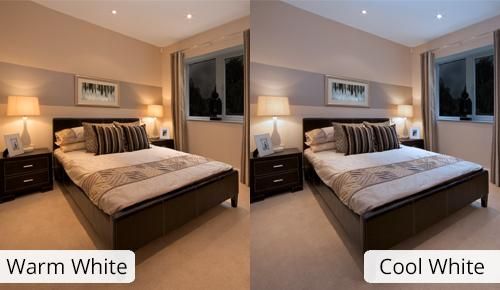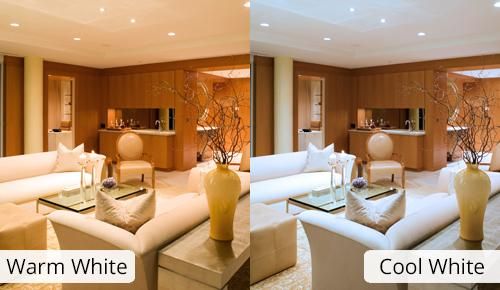Confused about the colour temperature of light fittings? A few pictures and a brief description of the differences.

It is probably helpful to understand colour temperature like a flame, the lower the temperature the more yellow it will be, the higher the temperature the more blue it will become....
A candle will glow yellow but your gas stove burns blue, this is a great example of temperature in the same way that lighting works. This is measured in Kelvins or K, that is why you will see options are usually quoted as 2700k to 6400k.
The temperature range in brief:
Warm White
2700k to 3000k
Warm white is probably most akin to what we are used to seeing in a traditional light bulb with a warm yelowish glow. This colour is best used where you want a warm cosy feel and are most likely to be using natural colours like browns, creams etc.
Natural White
3800k to 4000k
Traditionally the range between 3500k and 4000k was referred to as cool white, more recently the term 'Natural or Neutral White" as become trendy and cool white is being quoted higher at 5000k plus. This has caused a little ambiguity as traditionally it was always warm 2700-3000k, cool 3500k-4000k and daylight 6400k plus
Cool White
4000k plus
Cool white as a whiter, more crisp look and usually used with white/grey/blue interiors in Kitchens, Bathrooms and work places etc.
Daylight
6400k plus
Very blue white and usually used commercially to simulate daylight, a very cold feel
Lumens
You amy also see lumens quoted with light fitting and lamps, this is an indication of how much light a lamp or luminaire will give off and determine its brightness.
It is also fair to say that a lot of figures that are banded about have never been verified/tested in the UK, and lots of cheaper product is coming directly from China to peoples doors having never seen a UK test house...food for thought, buy cheap...buy twice!!